Uncategorized
BCW Lahore sizzles with Glamour
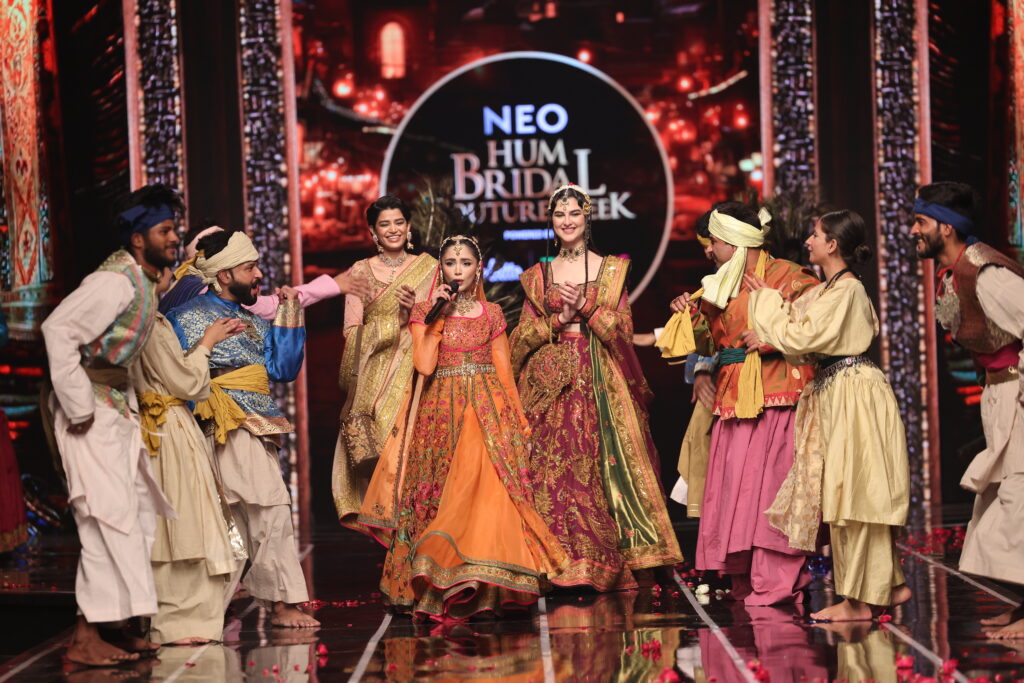
The 22nd edition of NEO HUM Bridal Couture Week commenced with great fanfare at Pearl Continental Hotel in Lahore, promising a visual feast of fashion, glamour, and cutting-edge bridal couture. The three-day event, organized in collaboration with NEO Paints, Bisconni Chocolatto and Zong 4G, showcased 29 designer collections this year, highlighting the latest trends in wedding fashion.
DAY 1.
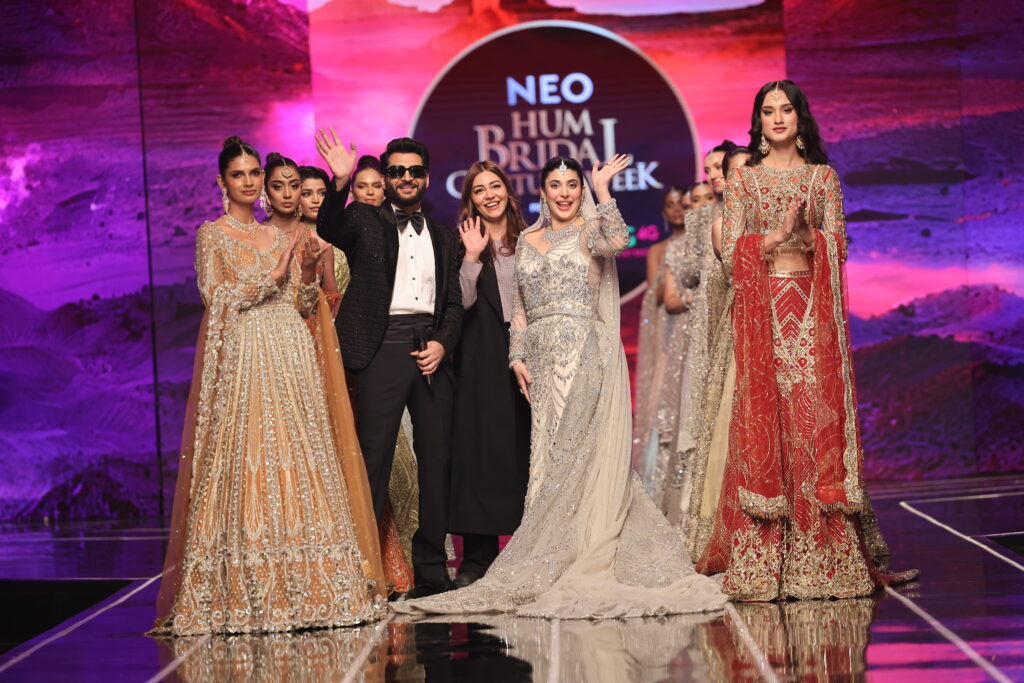

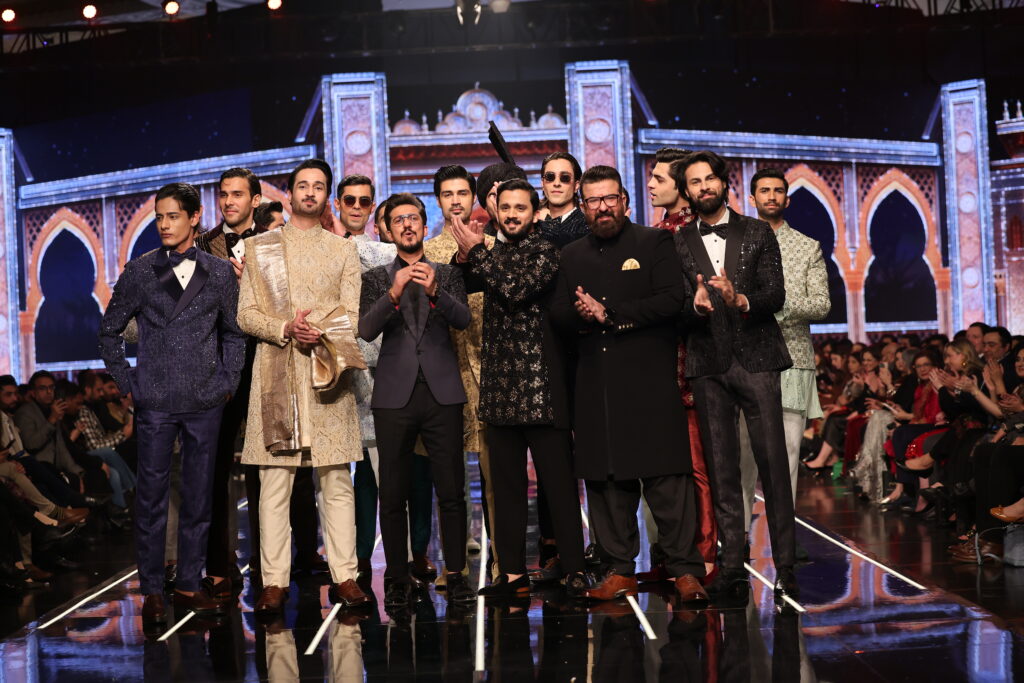
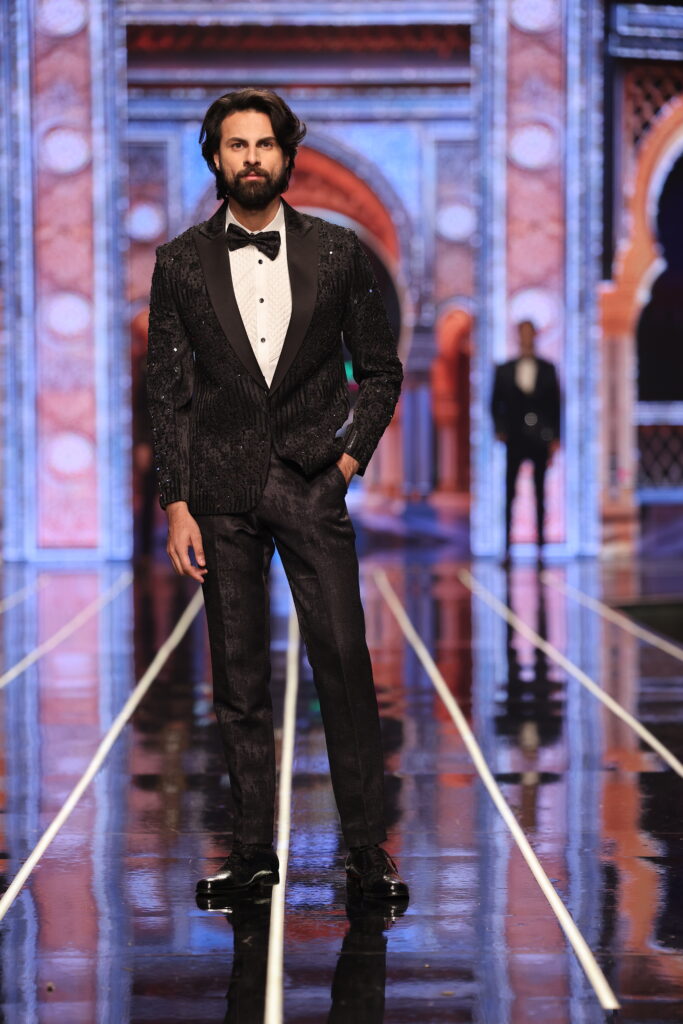
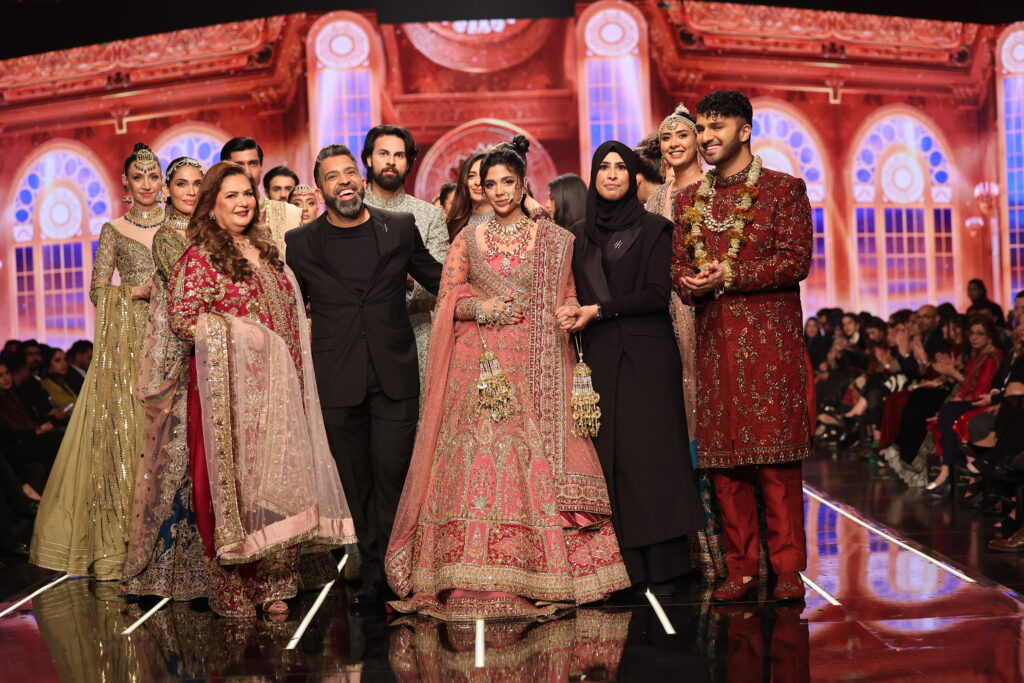
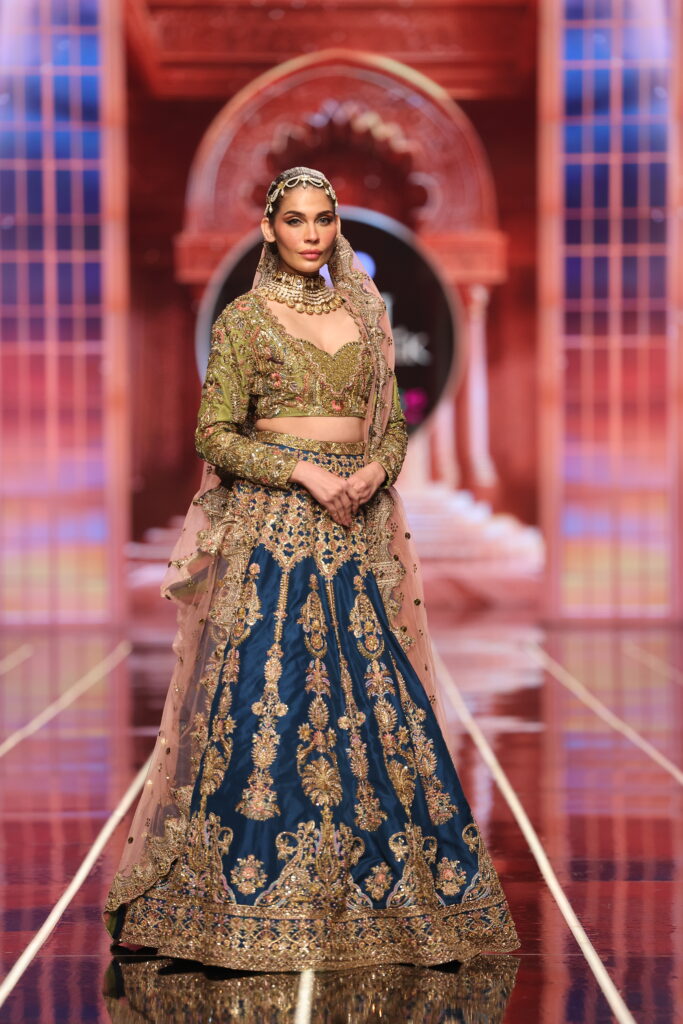

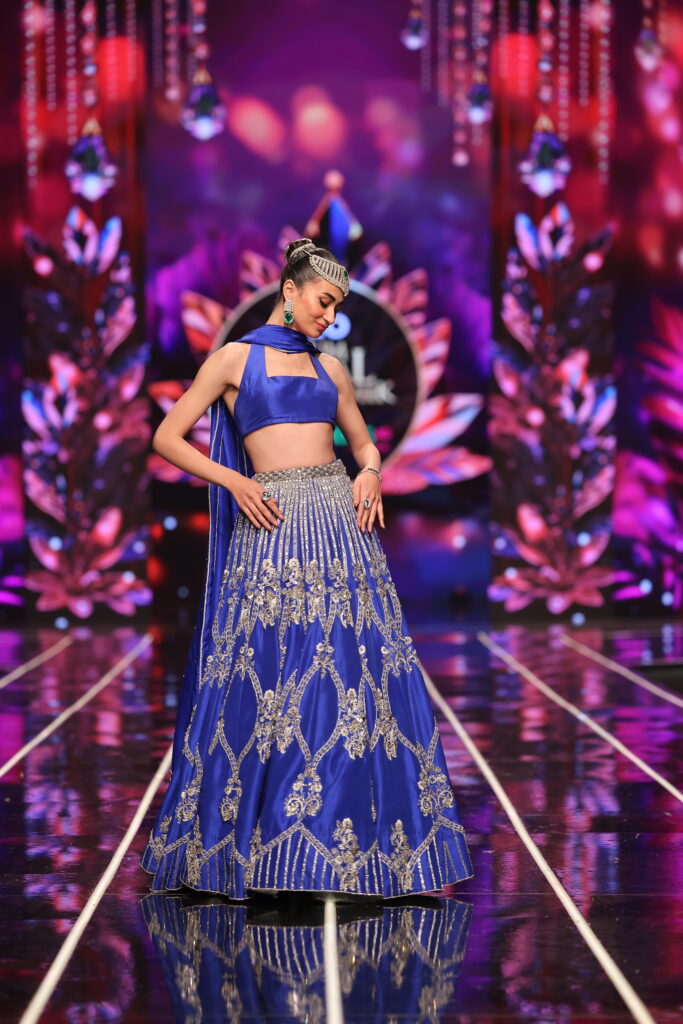

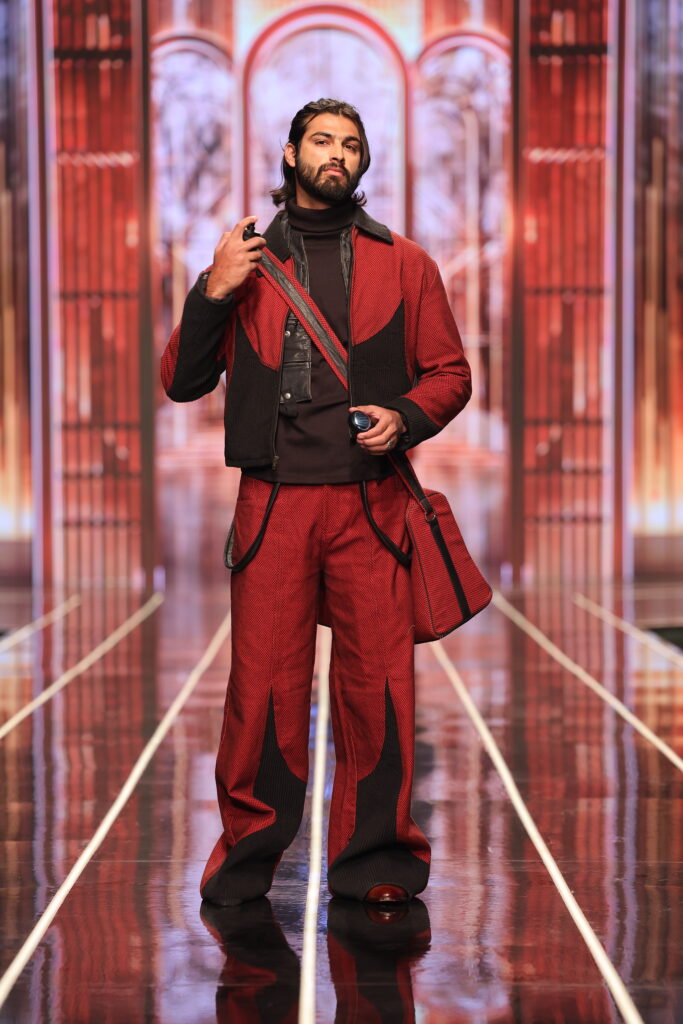
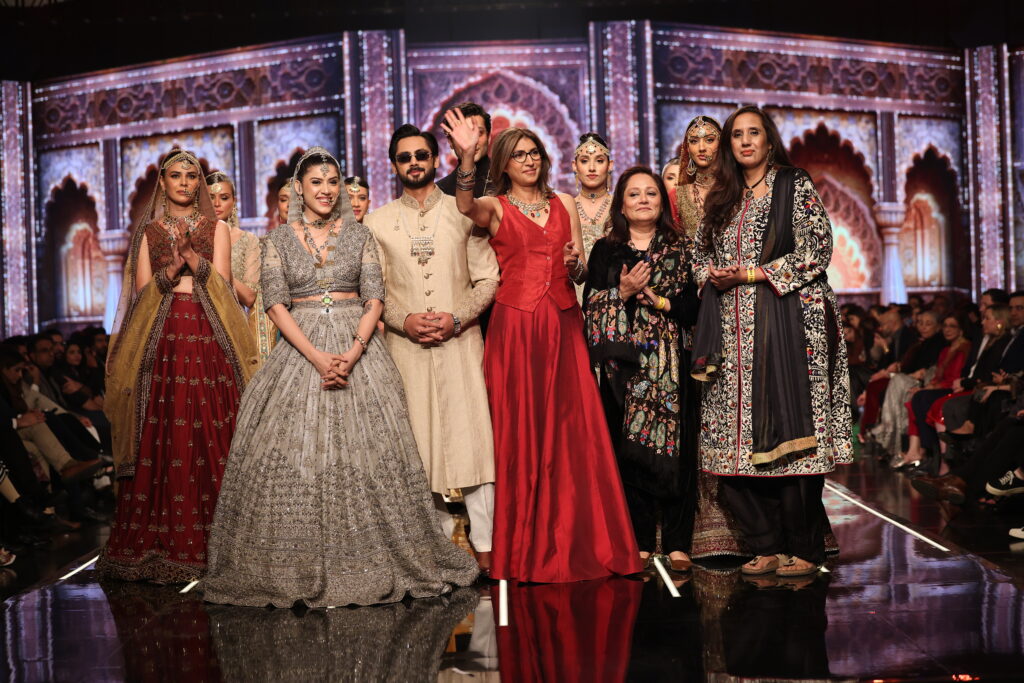
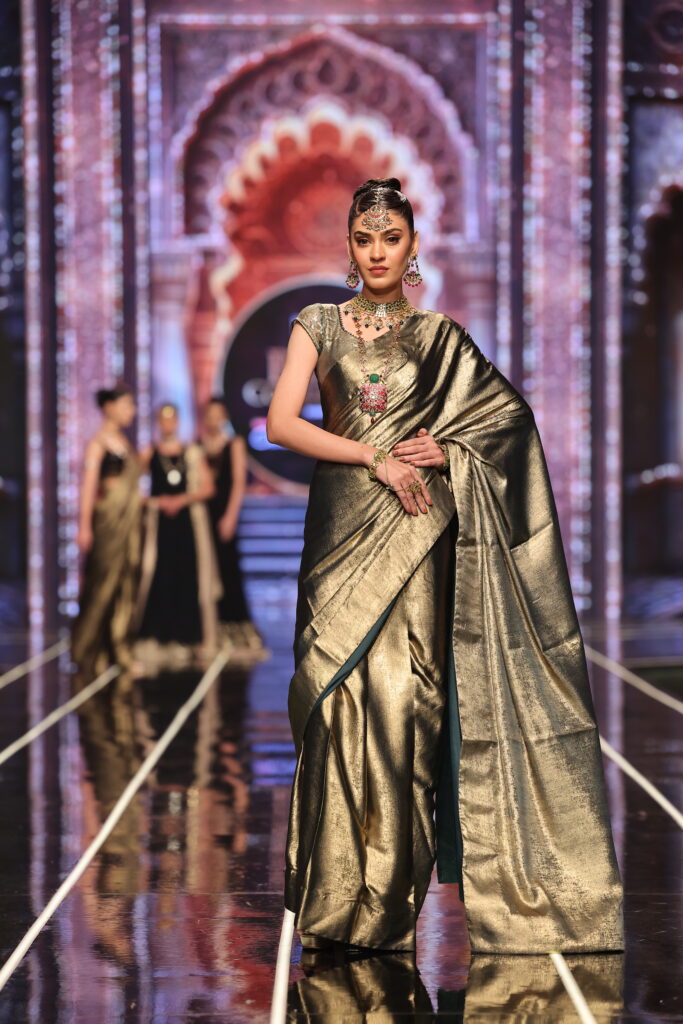

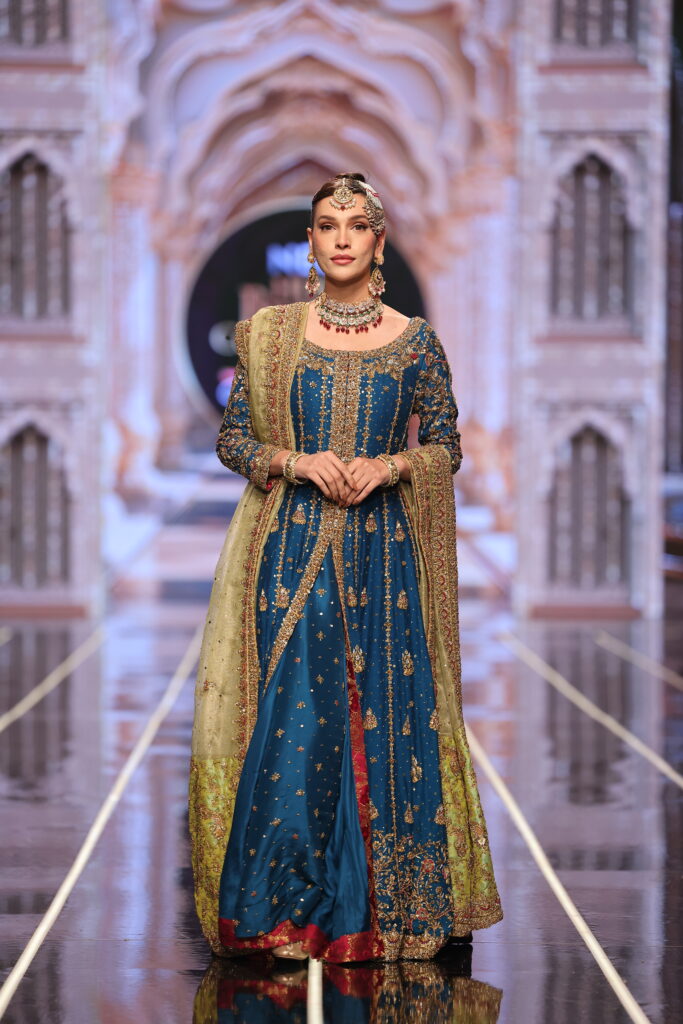
Having established itself as Pakistan’s premier fashion spectacle, BCW is distinguished by its innovative fusion of bridal couture with entertainment. As the pioneer of the showstopper concept in Pakistani fashion weeks, the event has consistently featured more celebrity showstoppers than any other fashion event in the country’s history, and what sets the event apart is its unique ability to attract Pakistan’s A-list celebrities, transforming it into more than just a traditional fashion showcase – a platform where fashion interacts with multiple facets of Pakistani pop culture. By seamlessly blending elements, BCW has created a unique ecosystem where fashion serves as the backdrop for broader cultural expressions and entertainment launches. The attendance of international photographers such as Zak Chowdhury and Alex Pichon participated in the show and collaborated with local talent.
The technological feats at this year’s event were nothing short of historic. Featuring Pakistan’s largest SMD/LED screens, the stage design was revolutionary. The pixel-to-pixel mapping created stunning 3D depth effects that elevated nearly 30 unique designs to another dimension. Designers engaged directly with interactive displays, supported by advanced wireless tech and synchronised sound and lighting. It was a seamless blend of fashion and innovation that set a precedent for future events.
Talking of innovation, Rashid Rana, the internationally-acclaimed Pakistani visual artist, recipient of both the 2017 Asia Art Award and Pakistan’s prestigious Sitara-e-Imtiaz, and currently the Dean of the School of Visual Arts and Design at the Beaconhouse National University in Lahore, showcased his most striking work from the ‘Red Carpet Series’ exemplifying his mastery of digital photomontage.
Day I kicked off with a lively performance by Bilal Saeed, who entertained guests during Ayesha Shoaib Malik’s segment, with Urwa Hussain dazzled as the showstopper. Age of Republic made waves with their stunning men’s collection, featuring YouTube sensation Rajab Butt as the highlight. Huma Hammad displayed exquisite bridal couture, with not one but two showstoppers: Sonia Hussain, who wore a breath-taking pink heavily worked dress, and the iconic Mumtaz Begum, who brought nostalgia to the ramp in a striking red and pink ensemble. The talented Saba Qamar showcased Iqra Furqan’s colourful ghagra choli, winning applause with her unique dance moves.
The fragrance of J. Dot wafted through the venue as models representing Junaid Jamshed took to the ramp, with cricket legend Wasim Akram serving as the showstopper. Next, Muneeb Nawaz’s collection featured Talha Anjum and Kinza Hashmi from ‘Kattar Karachi’ while talented singer Nimra Mehra enthralled the audience with her performance. Parishae Adnan’s dramatic presentation of bridal outfits left viewers breathless, with Daniya Kanwal and Aimal Khan gracing the ramp as showstoppers.
Choreographed by renowned model Vaneezah Ahmed, the show continued with her distinct jewellery collection, a first-time entrant showcased by TikTok star Aiman Zaman. Zeeshan Danish rounded off the first day with a striking array of colourful wedding outfits, featuring Nimra Khan as the showstopper.
DAY 2.

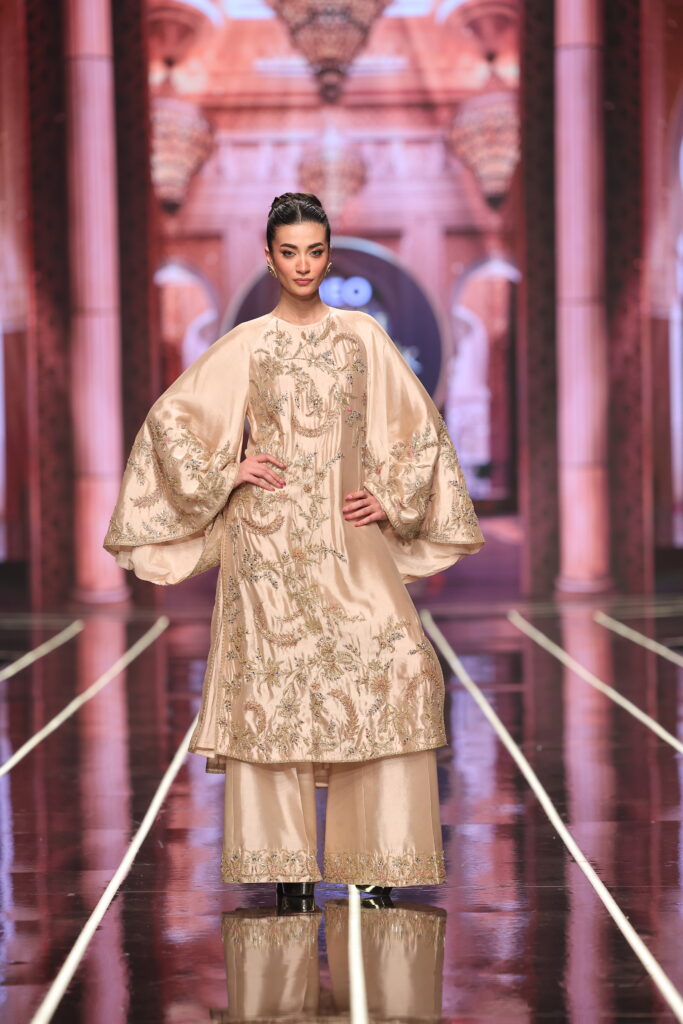
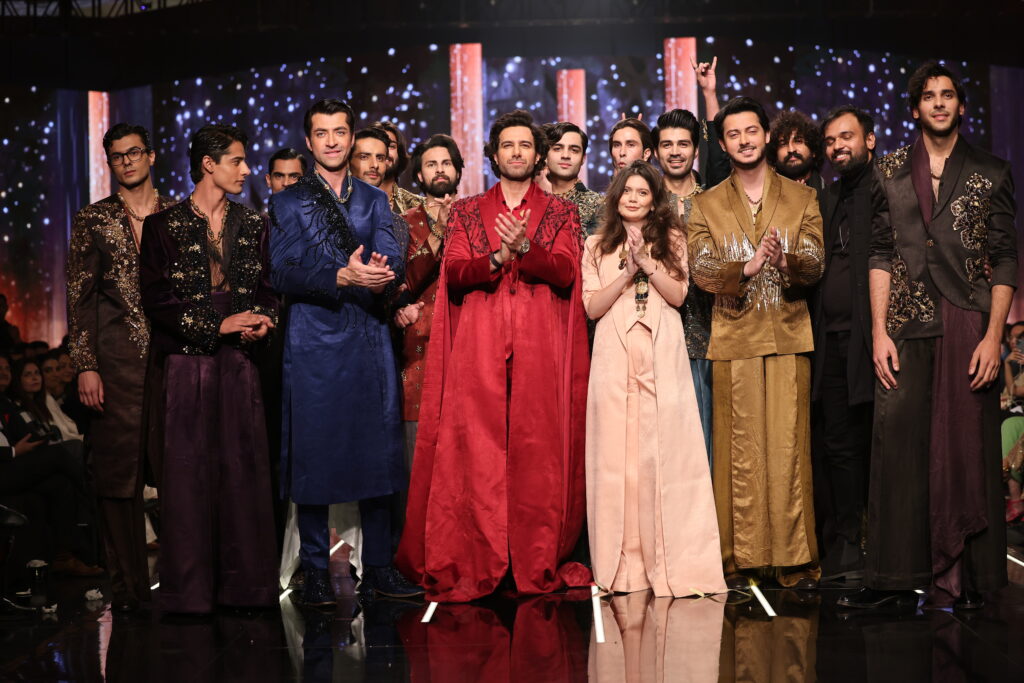

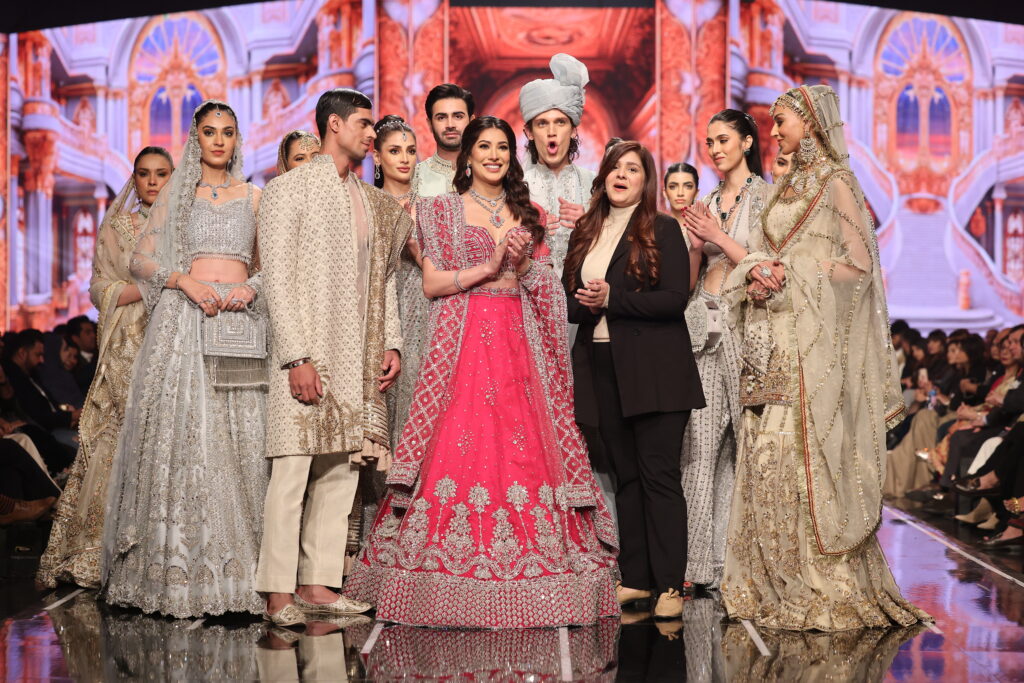

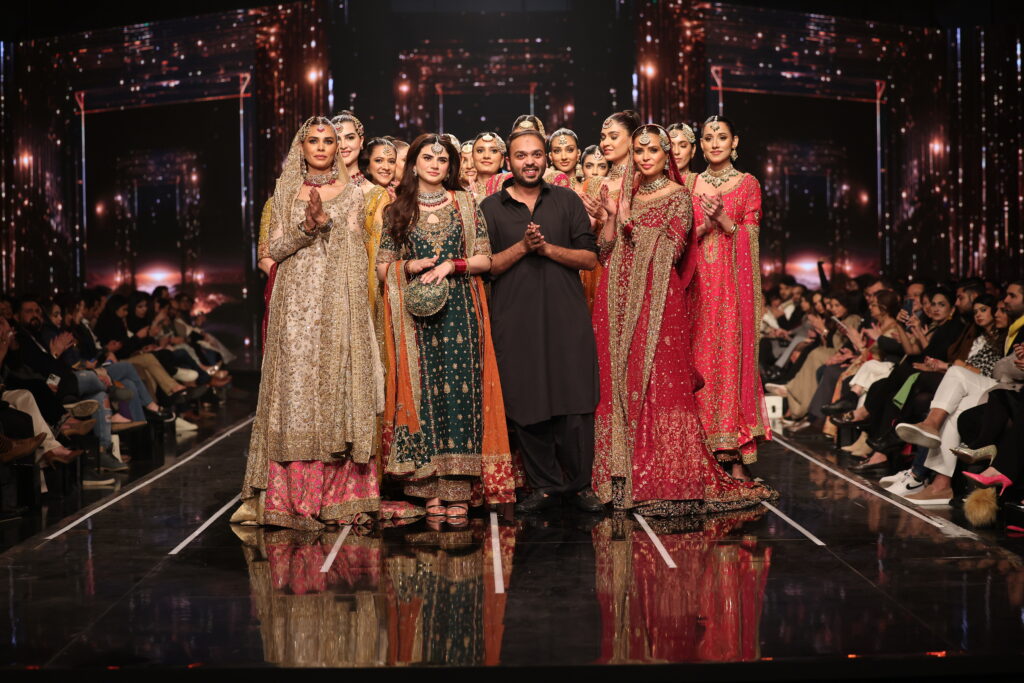
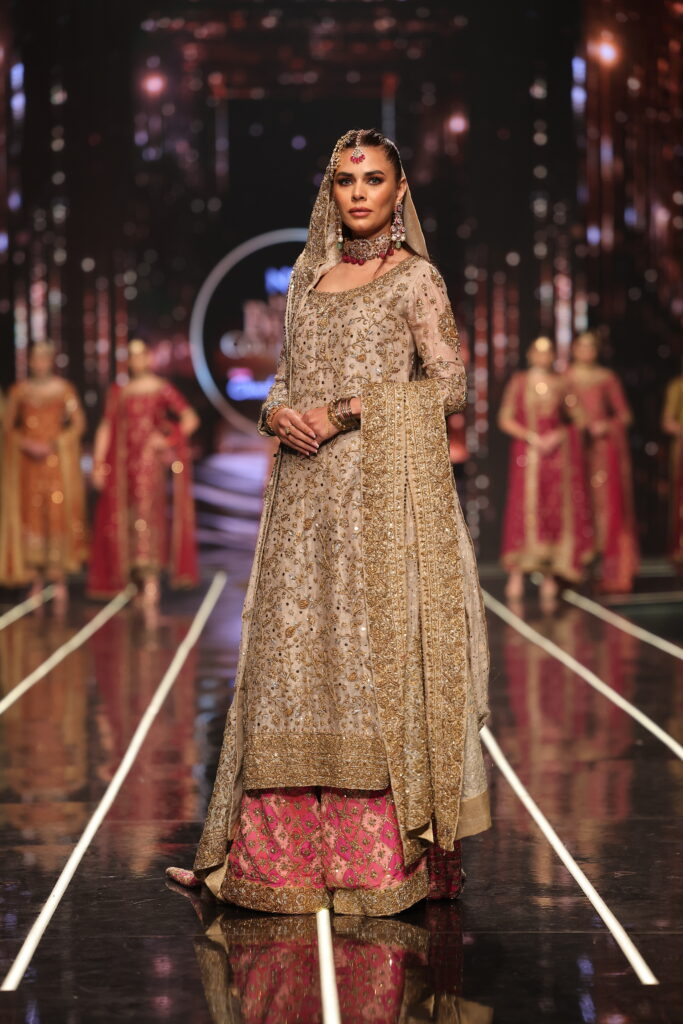
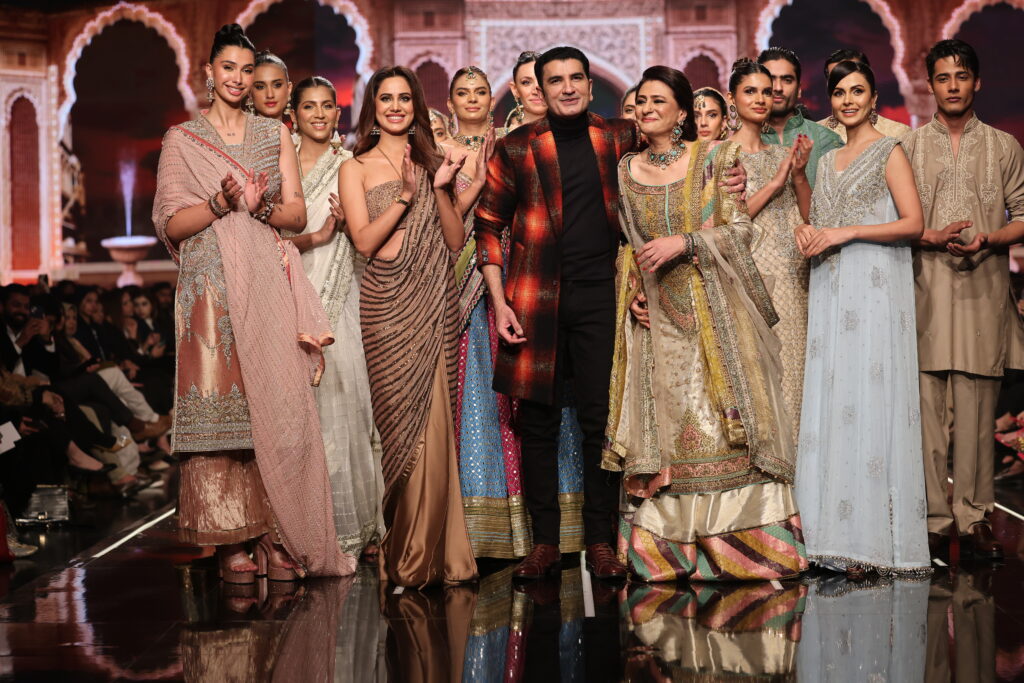
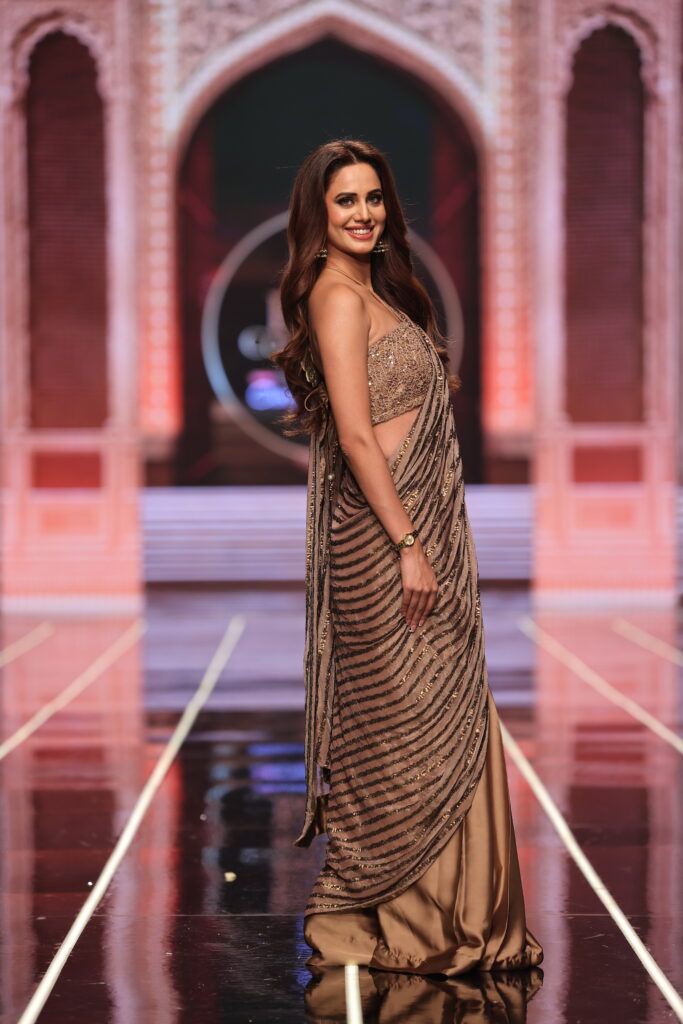
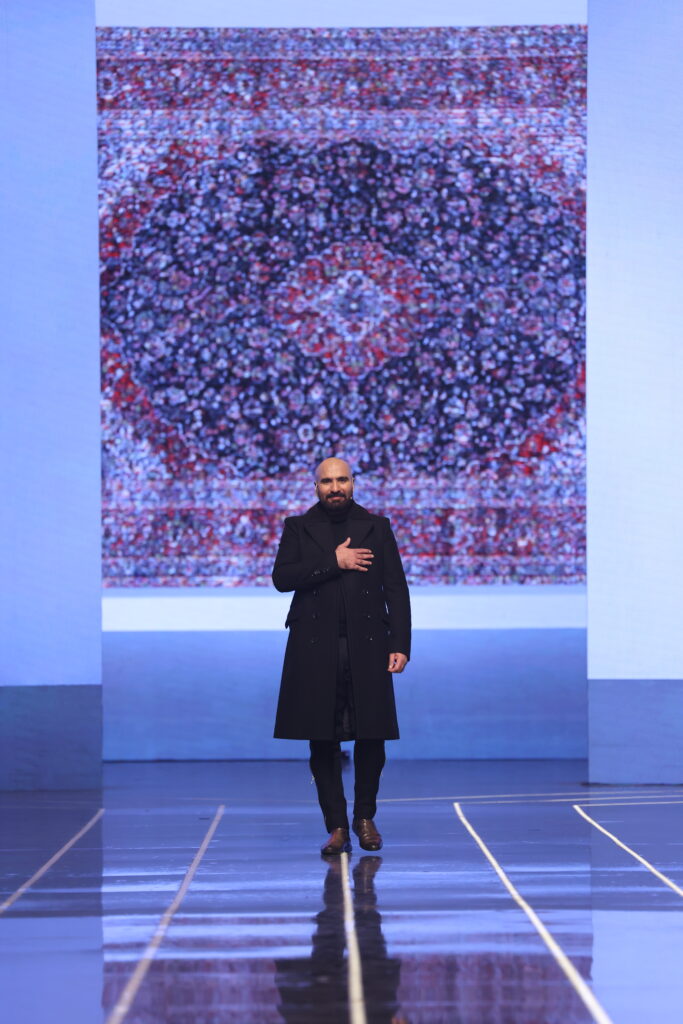

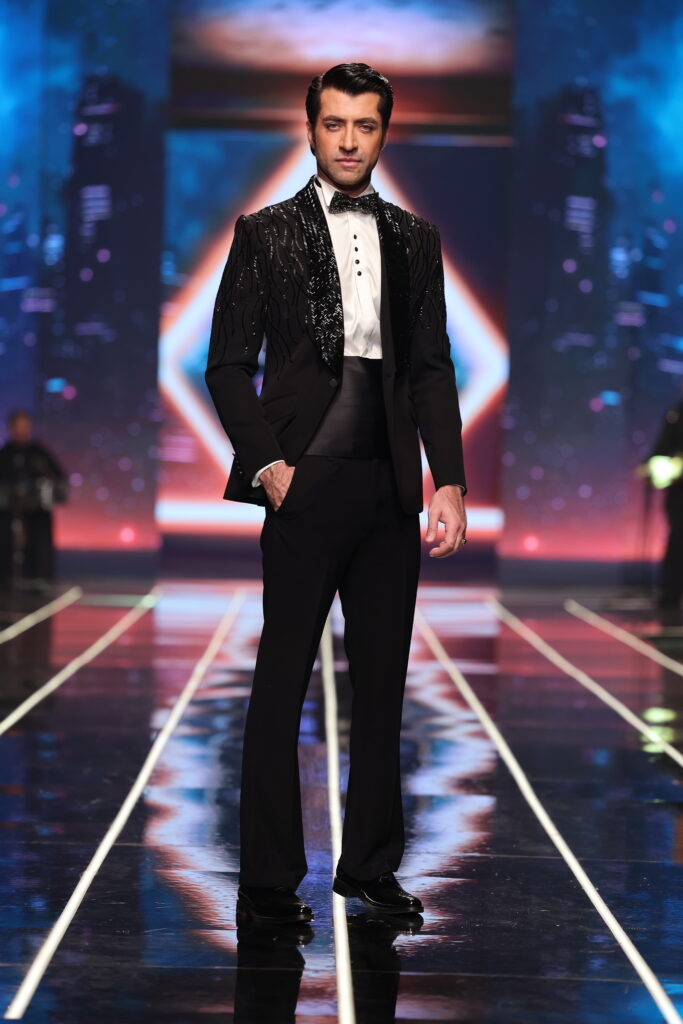

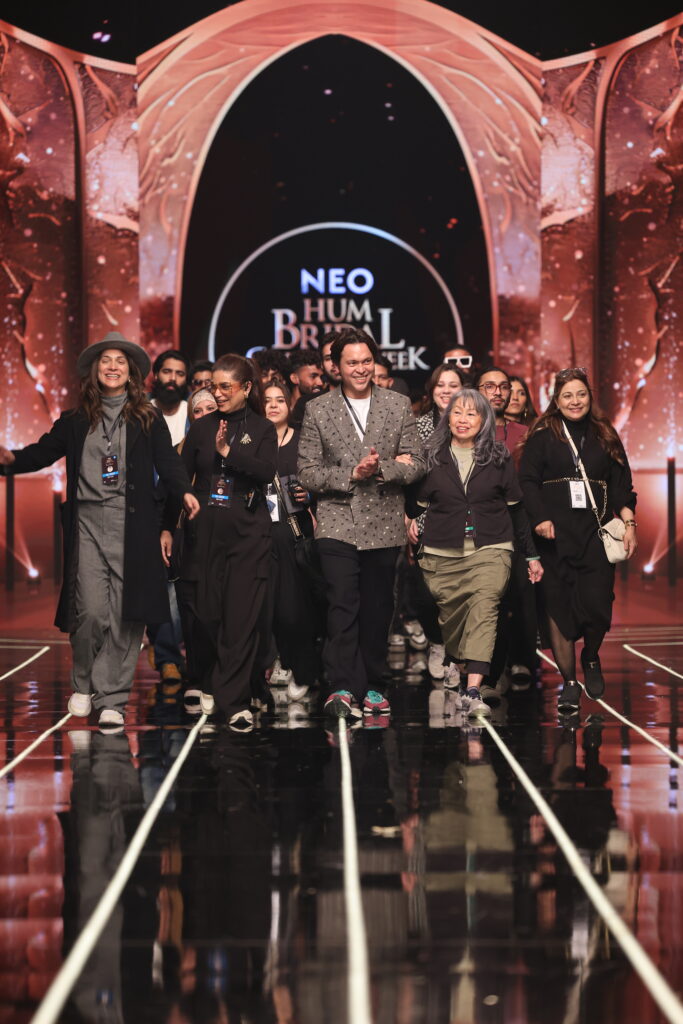
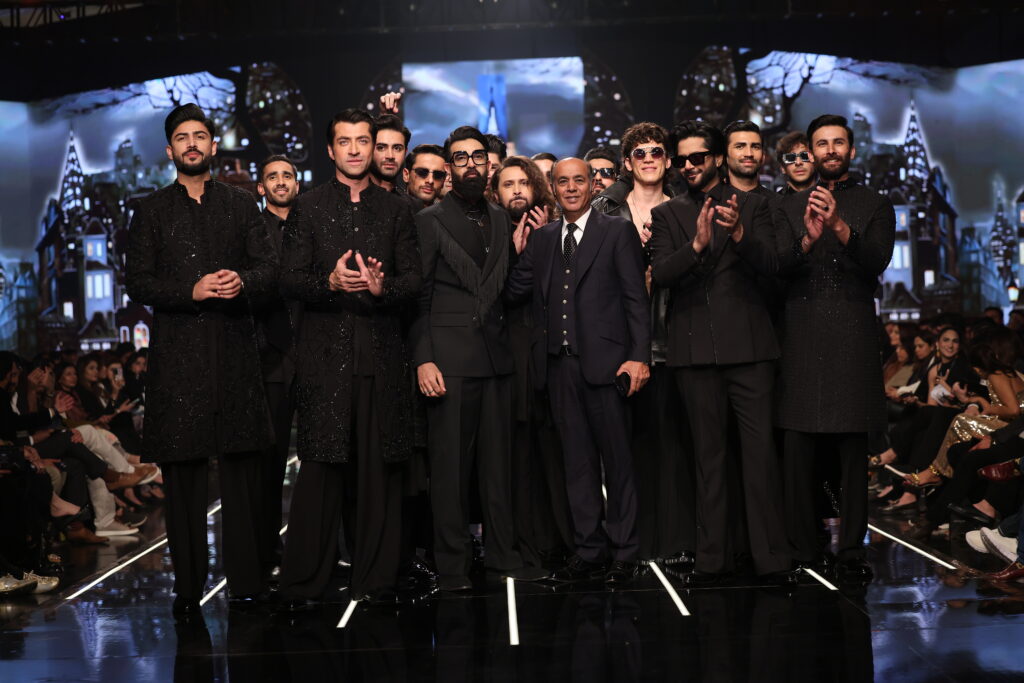




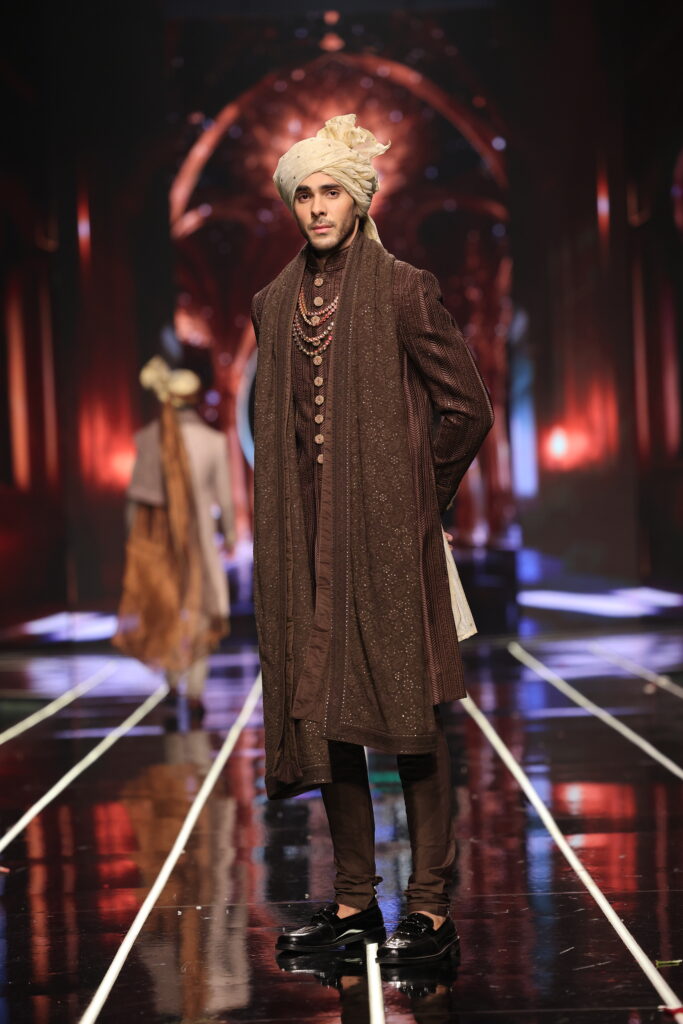
The second day started with Nazish Jahangir presenting Ehsan Nazir’s designs. Singer Tahir Abbas entertained the crowd at Almira’s fusion menswear taking centre-stage, highlighted by ‘Kabhi Mai Kabhi Tum’s’ Emmad Irfani as the showstopper. Basit Supra further had elevated the evening when Mikaal Zulfiqar and Amar Khan took the ramp, receiving a standing ovation from the audience. Hafsa Imran Khan charmed the crowd with her fusion ensembles, and the radiant Mehwish Hayat brought elegance to the ramp as the showstopper for Haris Shakeel’s vibrant collection. The night reached new heights with Mehdi’s traditional-modern blend was showcased by esteemed actresses Saba Hameed and Miss Grand International 2024’s Roma Michael.
Taib Abo’s black masculine wear captivated everyone’s attention, with Omar Shahzad as the showstopper. Khamaarian band’s performance added to the occasion’s magic, while the Tony & Guy team lent their creative touch to the event. As the day concluded, Zarya displayed a light and bright attire, with the outstanding showstopper Sadaf Kanwal, drawing applause from the crowd.
DAY 3.



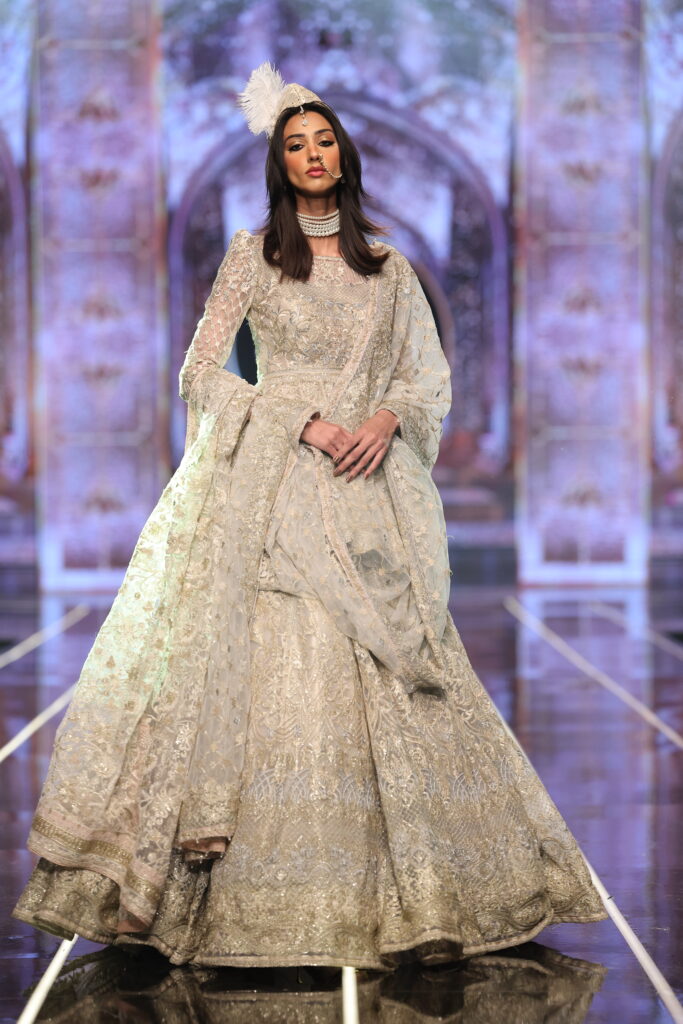

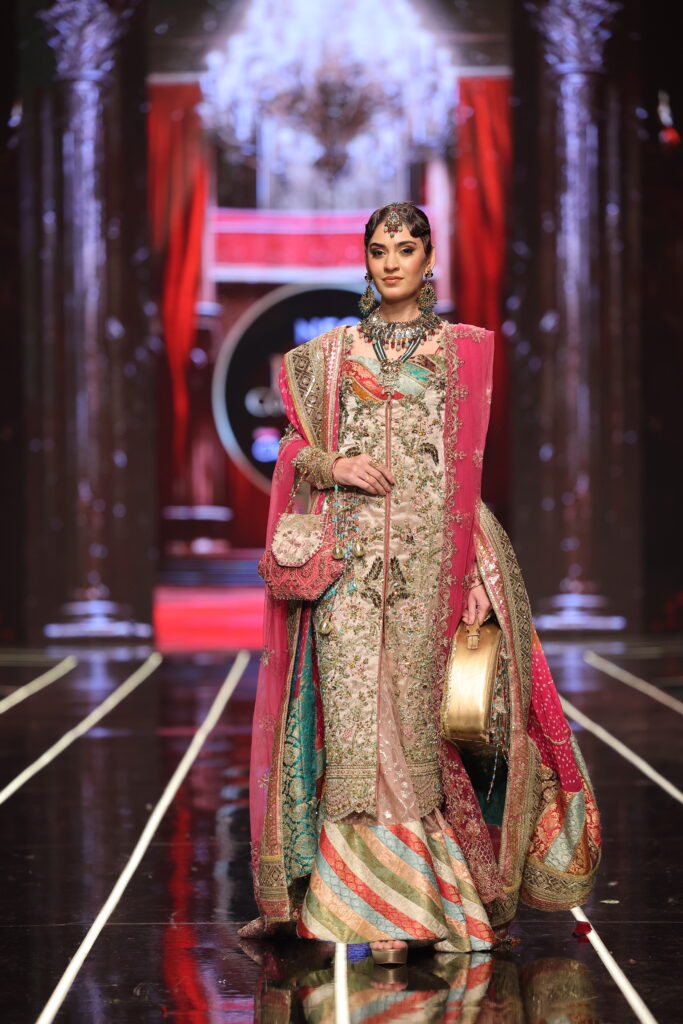

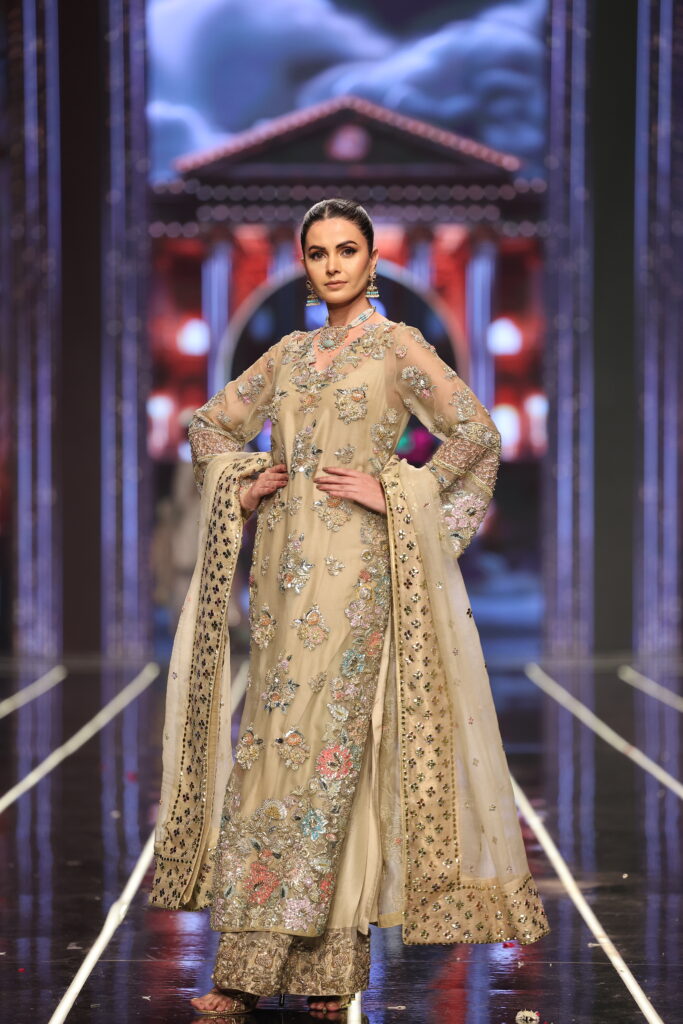


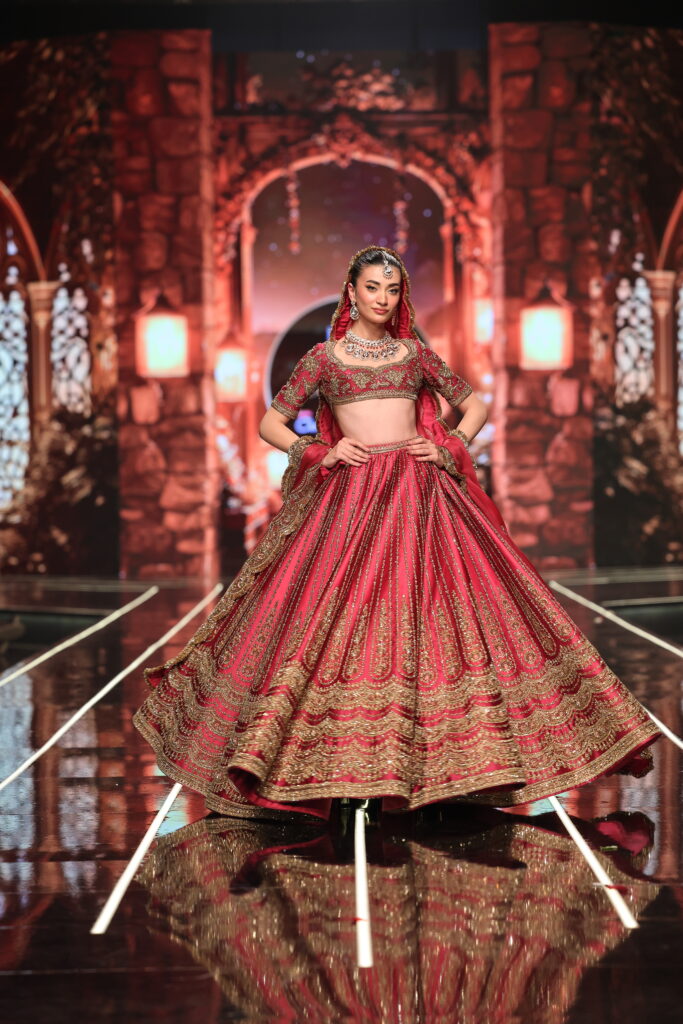
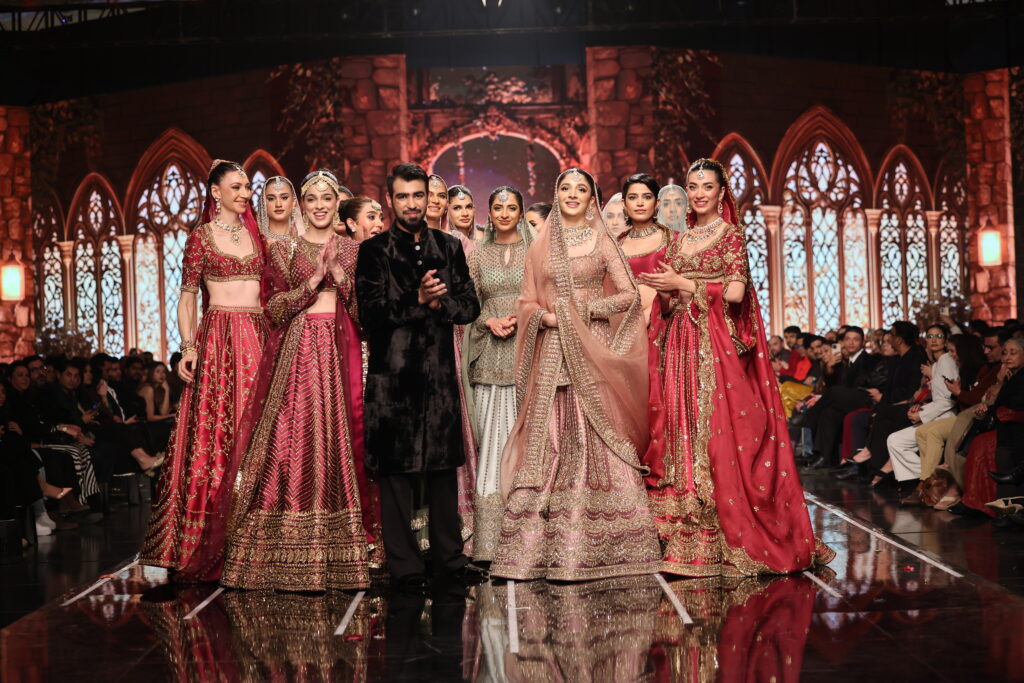
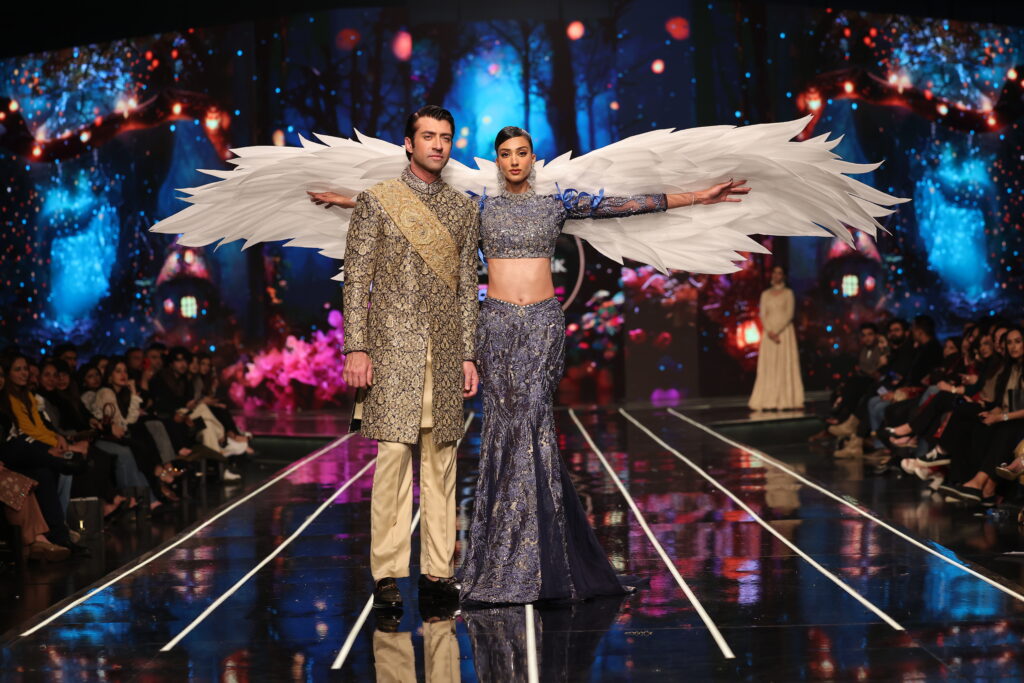
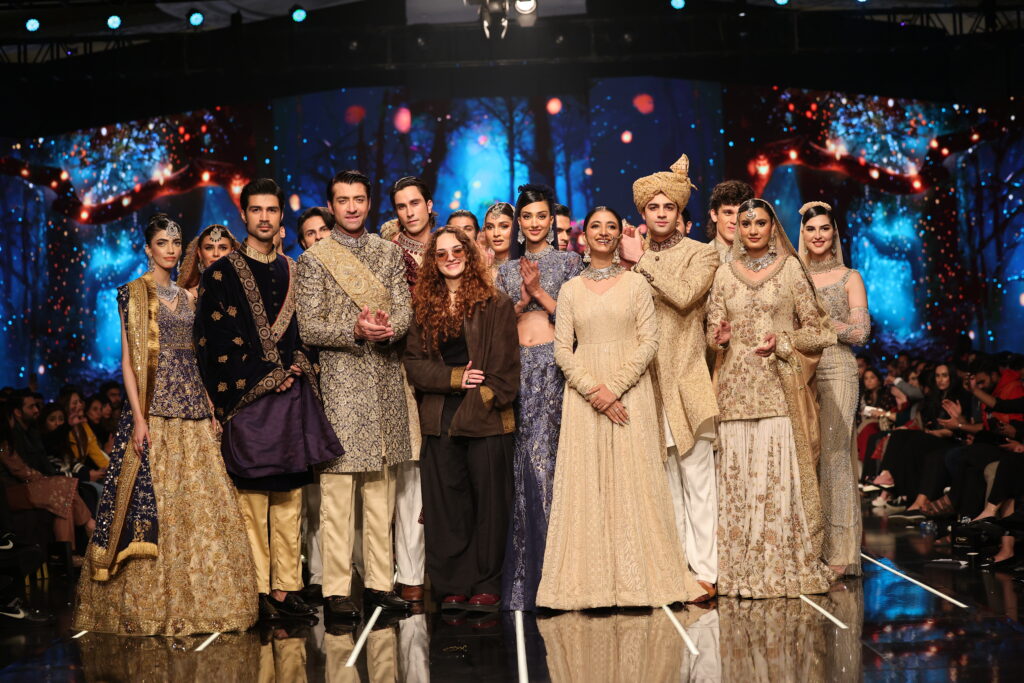

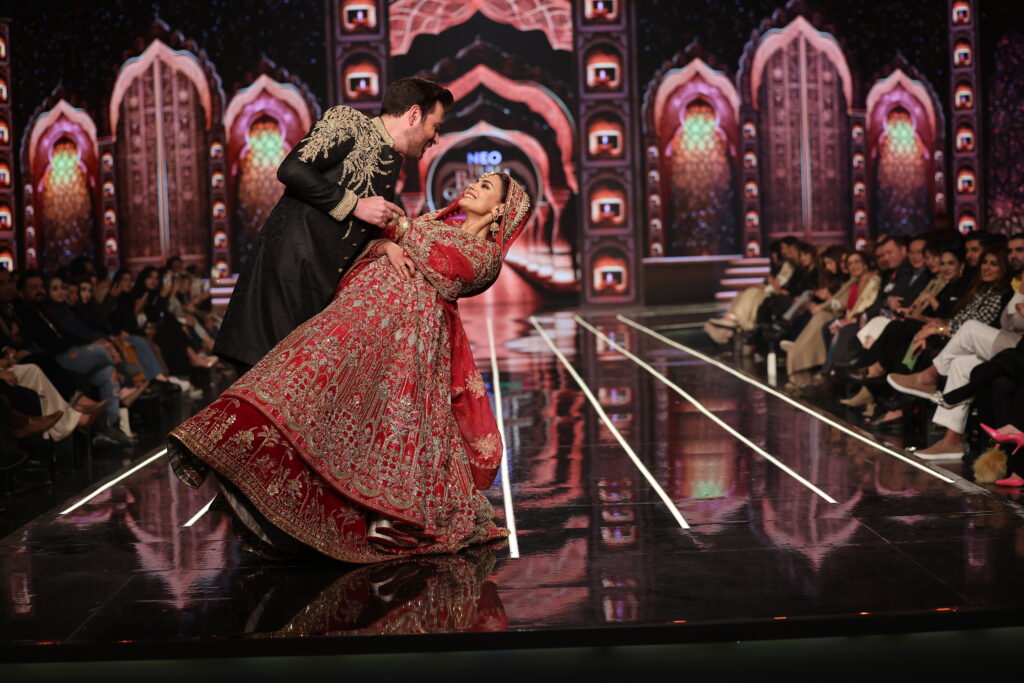



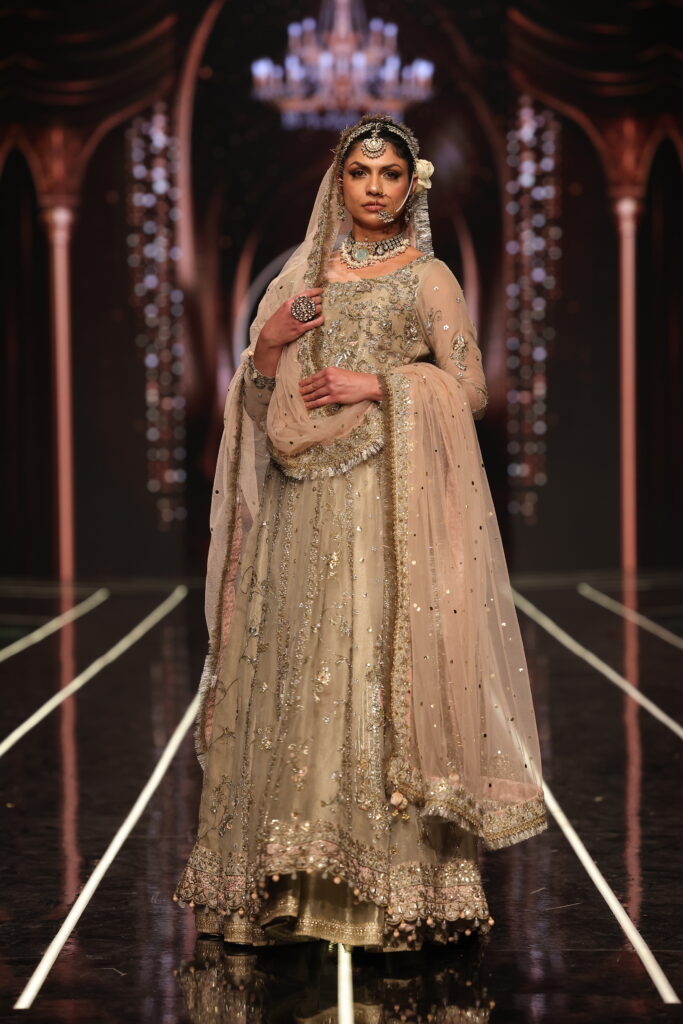
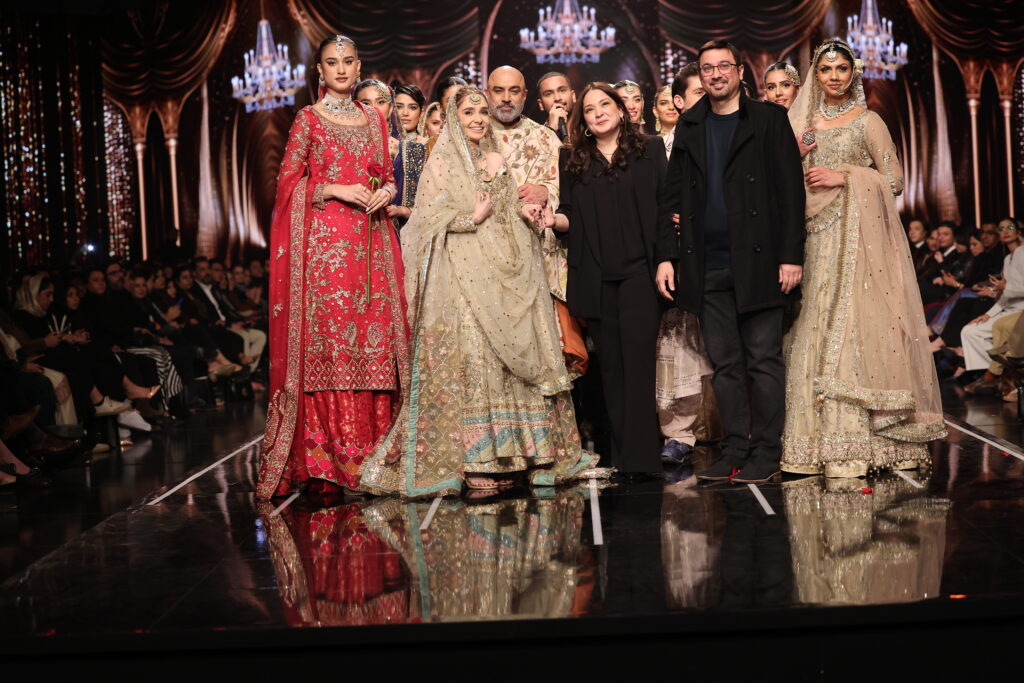


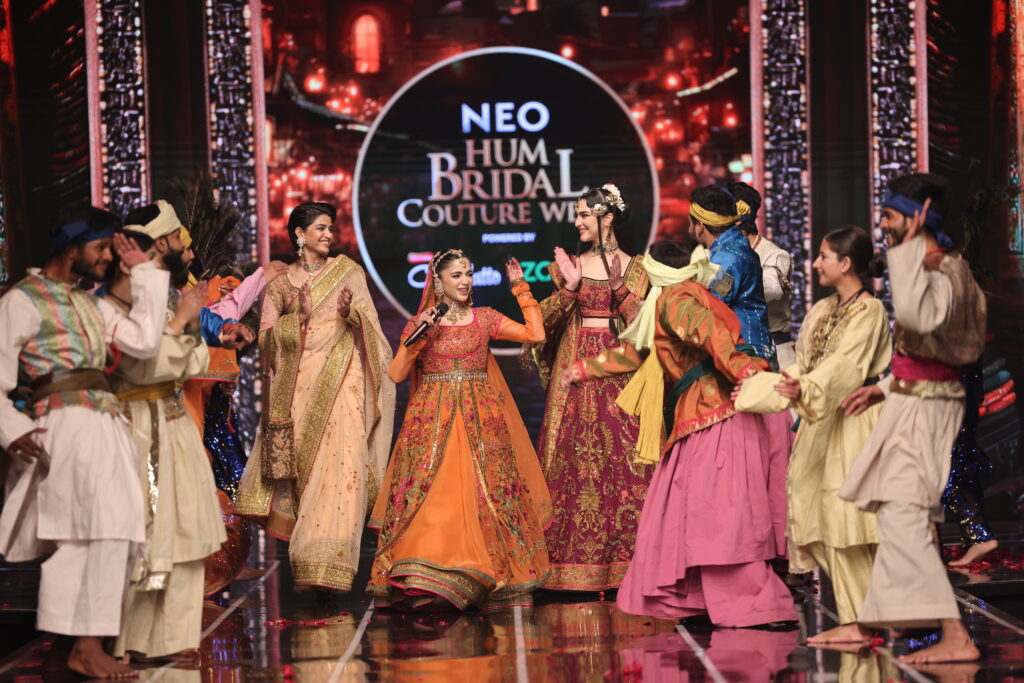
The third day of Bridal Couture Week is always eagerly anticipated, and this year was no exception, featuring celebrated designers like Ahsan’s Bespoke Menswear, Emraan Rajput, Fahad Hussayn, Fatima Ashr, HSY, Mihha, Musferah Saad, Souchaj, and Ziggi.
Ahsan offered an exquisite range of groomsmen’s wear, highlighted by Mikaal Zulfikar as showstopper. The crowd was treated to a thrilling musical performance by Ali Zafar and his brother Danyal, lifting spirits further.
Continuing with elegance, Emraan Rajput showcased his artistic vision, followed by Muneeb Nawaz who accompanied a charming little model. Fahad Hussayn’s noteworthy selection of wedding attire was accentuated by the Manwa Sisters’ performance, culminating in a breath-taking appearance of Aima Baig as she graced the ramp in Fahad’s creations.
Fatima Ashar’s segment saw Shaz Khan, Faran Khan, and Juggan Kazim walking the ramp as showstoppers. HSY’s show featured stunning silver and gold dresses, with Adnan Zafar and Mehreen Syed lighting up the runway. Mihha’s shimmering bridal wear rounded out the event, highlighted by the enchanting Mawra Hussain in teal.
The showcase concluded with Mufassra Saad’s captivating blend of tradition and innovation, featuring Osama Khan and Anmol Baloch as her showstoppers. Souchaj’s modern shalwar kameez collection also mesmerised, and Aimal Khan walked as Ziggy’s showstopper, bringing the event to a spectacular close.
Sultana Siddiqui, President, HUM Network, highlighting the importance of BCW for Pakistan’s fashion industry said: “It is indeed heartening that such wonderful and amazing work is being done in this country. We need to highlight them not only in Pakistan but also internationally, so that the world can be told that we are not behind anyone in any field, especially in art and culture.”
In a powerful finale, Seher Khan from the Centre for Human Rights, along with Fahad Hussain, delivered a poignant message, promoting awareness of women’s rights within marriage, adding a meaningful closure to an event that celebrated the vibrancy of Pakistani culture and fashion.
